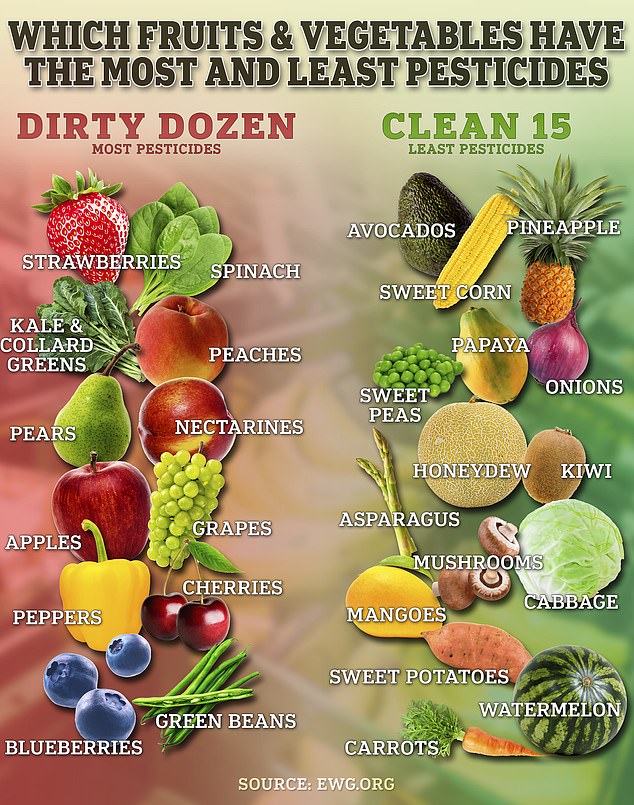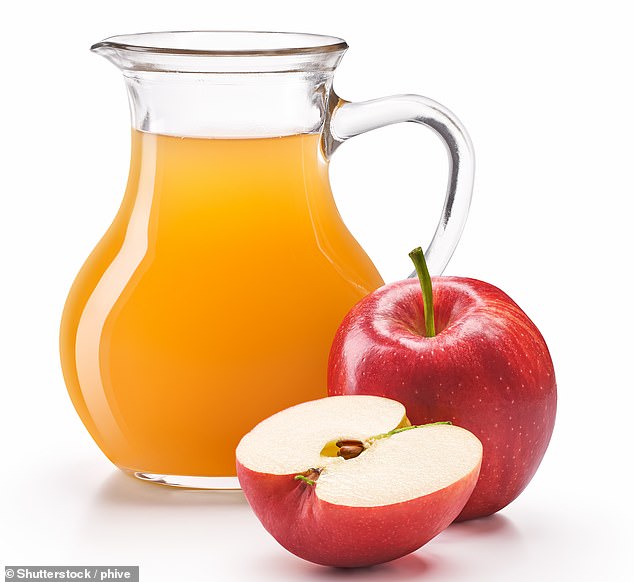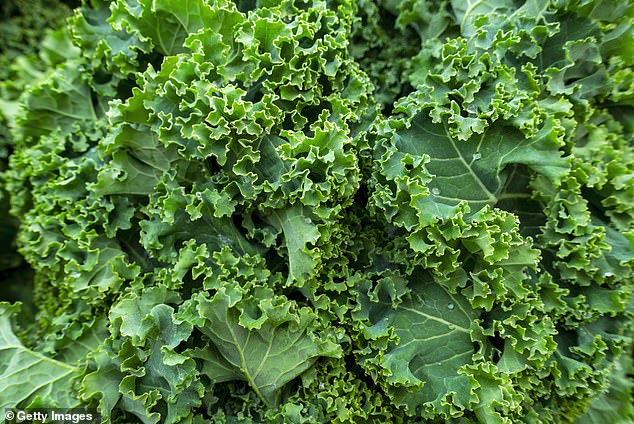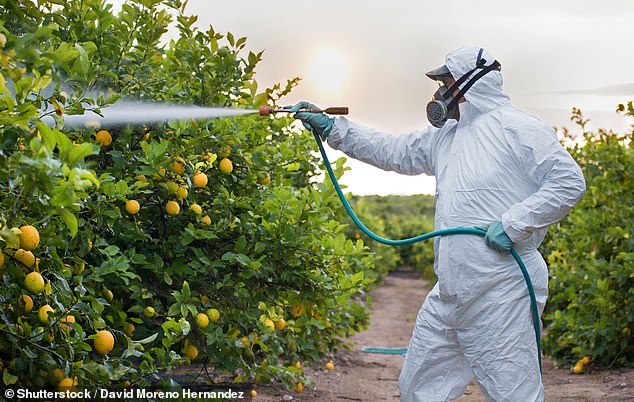Exposure to a trio of pesticides found in up to half of all children’s apple juice bottles could increase the risk of developing Parkinson’s disease in those with a genetic vulnerability, a new study suggests.
UCLA experts found that Americans who carry 26 genetic mutations could be especially vulnerable to brain damage linked to certain chemicals in produce.
Parkinson’s disease is a degenerative neurological disorder that affects areas of the brain that govern movement, speech and memory. It affects almost a million Americans.
Pesticides are ubiquitous in American agriculture on a variety of crops, and scientists focused on three classes of chemicals: organophosphates, organoarsenic, and n-methylcarbamate.
All are used to kill insects on fresh fruits and vegetables, with some studies suggesting that traces are present in up to 50 percent of the fruit juices on grocery store shelves.
California, where the study subjects were from, is the largest agricultural producer and exporter in the country and there are more than 14,000 pesticide products approved for use there.

More than 95 percent of samples of strawberries, apples, cherries, spinach, nectarines and grapes had at least two pesticides, the EWG found.
Organophosphate pesticides are among the most widely used insecticides in agriculture and are used to repel insects on a variety of crops, including fruits and vegetables that are made into juices on grocery store shelves.
About 40 percent of all pesticides produced and used commercially are organophosphates.
The federal government tested more than 80,000 food samples for pesticide residues in 1991 and 1996.
During that investigation, they discovered 13 organophosphate pesticides in or on food, according to FDA and USDA inspectors.
Organoarsenic has largely been eliminated from the agricultural field, although many countries, including the United States and the European Union, have banned or restricted the use of organoarsenic pesticides.
N-methylcarbamate is widely used in a long list of crops including fruits and vegetables, cotton, tobacco, nuts, wheat and corn.
TO 2004 study found that the compound was widely found in fruit juices intended for children, because the insecticide is used on those crops. Carbaryl was the most common N-methyl carbamate detected in juice samples, appearing in 58.6% of the samples analyzed, mainly apple juice.
UCLA Health researchers looked at a group of 757 Parkinson’s disease (PD) patients from the Parkinson, Environment, and Genes (PEG) study to explore the connection between genes, pesticides, and PD risk.
Most of the participants, who were from rural areas of central California, were white men and had an average age of 68 years.

Pesticides used in agriculture end up in the fruit we eat and the juices we drink.
While scientists could not say to what extent pesticides increased the risk of Parkinson’s disease, the research concludes that under the right stress, such as exposure to certain pesticides, genetic mutations can, over time, lead to the development of Parkinson’s disease.
Organophosphorus, organoarsenic, and n-methylcarbamate are neurotoxins that damage pathways in the brain driven by the neurotransmitter dopamine, involved in movement and mood.
Levels of this chemical plummet in cases of Parkinson’s, causing characteristic tremors and cognitive decline.
The chemicals also disrupt the autophagy process, which removes damaged proteins from cells. Disrupting this process can lead to the buildup of toxic PD-related proteins.
The researchers selected 85 genes known to be related to PD from the existing literature and genes involved in removing waste from brain cells.

Organic produce generally had much less pesticide residue than non-organic produce, but some still posed a high risk.
The riskiest mutations occurred in the genes EP300, FBXO7 and HTT, for subjects exposed to pesticides.
The presence of these mutations could interact with pesticide exposure to increase the risk of Parkinson’s disease.
The researchers detailed their findings in a new report published in the journal Parkinson’s disease.
California, where the study subjects were from, is the largest agricultural producer and exporter in the country and there are more than 14,000 pesticide products approved for use there.
UCLA researchers previously identified 10 pesticides that specifically attack dopaminergic neurons, which determine motor skills and movement, hallmarks of Parkinson’s.
Two pesticides that have been studied and found to influence Parkinson’s risk include rotenone and paraquat.
NIH researcher Dr Freya Kamel said: “Rotenone directly inhibits the function of mitochondria, the structure responsible for producing energy in the cell.
“People who used these pesticides or others with a similar mechanism of action were more likely to develop Parkinson’s disease.”

